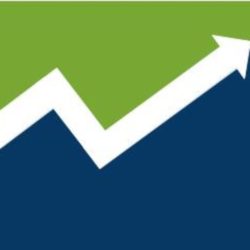Summary: Maintaining your cash reserve, typically six months of income, in an online bank’s savings account will allow you to earn the highest rate of return on those funds while maintaining ready access to the funds without market risk exposure. An account with Treasury Direct is another option for some of the funds that don’t have to be immediately available. End Summary.
A client, a federal government employee, asked for advice on how to maintain her cash reserve and it makes sense to summarize that in a blog post. First, let’s review the basics.
The rule of thumb is to maintain six months worth of income readily available in order to weather things like job losses, vehicle emergencies, and other similar contingencies. It’s important to do this in order to avoid taking on debt during these situations or to have to liquidate investments during a down market in order to meet these requirements. Saving in such a fund, even while in debt, is an important component of debt reduction because without it, it can seem impossible to break the debt cycle given life’s financial uncertainties. A good strategy is to contribute an amount to the fund each paycheck while servicing one’s debt or even paying down the principal, albeit at a slower rate given the savings buildup. Okay, that said for context, here’s the main issue.
Most financial institutions are paying less than a half percent interest on deposit balances. Inflation is in the two percent range so that money is actually losing value. The good news is that there are other options. Here comes online banking to the rescue. A quick search on “online banking interest rates” will bring up several quick comparison sites. We, as always, strive to save you time. Our pick: Goldman Sach’s Online Savings Account. The account has no minimum balance, can be opened fairly easily online, and is currently paying 2.25 percent APY interest compounding daily. That’s a winner. That said, there are several similar offerings, so feel free to shop around.
Another option for balances that don’t need to be immediately available and yet for which you don’t want market risk exposure, is the U.S. government’s Treasury Direct. Through an account there you can invest directly in short-term bills and bonds with various time horizons. We use this, as do several clients, and find it an easy way to eak out a bit more interest.
Drop us a line if you have questions or send a message at the firm’s facebook page.

